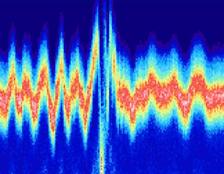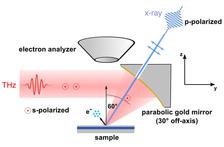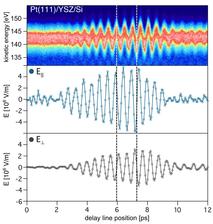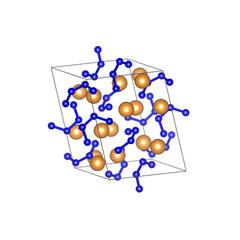THz streaking of the Pt(111) valence level of the thin-film sample. A whole delay trace is shown in the figure below. (Source: Original publication Optica 2019)
The unique FLASH THz facility is worldwide leading in providing tunable narrowband Terahertz (THz) pulses with an intrinsic synchronisation to soft X-ray pulses. These THz pulses are continuously tunable in the range of 10‐300μm (4-125 meV) and the energy per pulse is in the range of several 100 μJ for pump-probe experiments at the free-electron laser FLASH at DESY.
A group of scientits from University of Zurich, ETH Zurich, Paul Scherrer Institute (all from Switzerland), Universität Augsburg and DESY utilized this unique high-field THz accelerator-based radiation source to characterize the electric field of the THz pulse, that was driving ultrafast processes at the solid state interfaces. This novel, in-situ approach was using photon streaking. This means that after the soft X-ray pulses from FLASH photoionized the sample the energy and the momentum of the instantaneously created electrons was influenced by the presence of strong THz field, which could was measured.
Photoelectron streaking has been used for pulse characterization before. However, in this study photoelectron streaking was used in a completely different way. The authors were interested to probe the local dielectric response at the solid interfaces. They noticed a substantial difference in the data coming from a bulk metal surface and a nano-structured Pt thin-film. In this experiment they also used a back-reflecting multilayer mirror designed and prepared at DESY multilayer lab. This high reflectivity and narrow band mirror enabled to spatially overlap THz and soft X-ray pulses on the sample and to suppress unwanted background.
Development of polarization-sensitive near-field probe with chemical selectivity is of high interest for many fields (optoelectronics, nano-plasmonics) and this work paves the way for direct probing of the near-field effects of the nanostructures.
Reference:
Polarization-sensitive reconstruction of transient local THz fields at dielectric interfaces, K. Waltar, J. Haase, R. Pan, T. Golz, P. Kliuiev, M. Weinl, M. Schreck, S. Bajt, N. Stojanovic, J. A. van Bokhove, M. Hengsberger, J. Osterwalder, and L. Castiglioni, Optica 2019; DOI: 10.1364/OPTICA.6.001431











